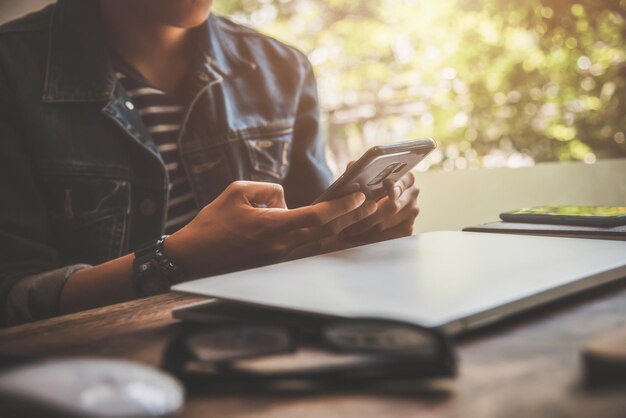Effortlessly Transfer Your Contacts: A User-Friendly Guide to Seamless Transition
In today’s fast-paced digital world, managing and transferring your contacts efficiently is more critical than ever. Whether you're switching phones, updating to a new email platform, or simply safeguarding your data, knowing how to transfer contacts smoothly can save you significant time and frustration. This comprehensive guide provides practical, step-by-step instructions, explores various methods, and offers useful tips to ensure your transition is hassle-free and secure. 📱✨
Why Contact Transfer Matters
In an era where communication is primarily digital, your contact list is one of your most valuable assets. From business partners to family members, having easy access to your contact details ensures you stay connected with those who matter. Moreover, migrating contacts securely mitigates the risk of losing essential information.
The Basics of Contact Transfer
Understanding Your Device and Platforms
When it comes to transferring contacts, the process will depend significantly on the devices and platforms you are using. Here’s a quick breakdown:
- iPhone to iPhone: Utilizing iCloud.
- Android to Android: Using Google Account Sync.
- Cross-Platform (e.g., iPhone to Android): Third-party apps or manual export/import methods.
Evaluating Your Contact List
Before starting the transfer process, it's beneficial to clean up your contact list. Remove duplicates, update outdated information, and back up your data. This preparatory step helps streamline the transfer process.
Transfer Contacts Between iPhones
Transferring contacts between iPhones is straightforward with Apple's ecosystem.
Method 1: Using iCloud
- Ensure iCloud Backup is Enabled: Go to Settings > [Your Name] > iCloud and make sure Contacts is toggled on.
- Sign into iCloud on New Device: Use the same Apple ID credentials on your new iPhone and turn on contact sync in iCloud settings.
- Verify Transfer: Open the Contacts app to ensure all your data is there.
Method 2: Quick Start
- Bring Devices Close Together: Ensure Bluetooth is enabled.
- Use Automatic Setup: Follow the prompts on your old device to set up the new iPhone.
- Complete Using iCloud Backup: Choose an iCloud backup to restore contacts and other data.
Tip: Always make sure both devices are charged and connected to Wi-Fi to avoid interruptions.
Transfer Contacts Between Android Devices
For Android users, Google's sync service is an efficient way to transfer contacts.
Method 1: Using Google Sync
- Ensure Google Sync is Active: On your old device, go to Settings > Accounts, select your Google account, and ensure Contacts sync is enabled.
- Set Up Google Account on New Device: After signing in on the new Android device, contacts will sync automatically.
Method 2: Exporting/Importing Contacts
- Export Contacts: Open the Contacts app > Settings > Export and save them to your device's storage as a .vcf file.
- Transfer the File: Use Bluetooth, email, or a cloud service to move the .vcf file to your new device.
- Import Contacts: Open the Contacts app > Import, and select the .vcf file.
Cross-Platform Contact Transfer
Transferring contacts between different operating systems can seem daunting, but modern tools make this easier than ever.
Method 1: Using a Third-Party App
Several apps facilitate cross-platform transfers, such as SHAREit, Copy My Data, and others. They work via Bluetooth or Wi-Fi, ensuring a swift process.
- Download App on Both Devices: Follow on-screen prompts to enable data transfer.
- Select Contacts: Choose contacts to migrate and confirm.
Method 2: Exporting via Email or Cloud Service
- Export Contacts to .vcf File: As mentioned in the Android section, this method creates a universal file type.
- Email the File or Save to Cloud: Access the file from the new device, download, and import.
Troubleshooting Common Issues
Despite best efforts, sometimes things don’t go as planned. Here’s how to tackle some common problems:
- Contacts Not Appearing: Check that sync is enabled and stable internet is available.
- Duplicates: Most platforms have built-in features to merge duplicates—run these after transfer.
- Incomplete Transfer: Re-attempt the merge or consider using another transfer method.
Tips for a Smooth Contact Transfer Process
- Back Up Data: Always maintain a backup on an external hard drive or cloud service.
- Wi-Fi vs. Data: Use Wi-Fi for transfers to avoid data charges and ensure speed.
- Stay Updated: Regularly update apps and OS to ensure compatibility and security.
Visually Distinct Summary Section: Key Tips for Seamless Contact Transfers ✅
- Prepare & Backup: Clean up your contacts and back up necessary data before starting.
- Use Built-In Features: Leverage built-in options like iCloud and Google Sync for efficiency.
- Explore Third-Party Apps: If changing platforms, trusted apps like SHAREit can simplify the process.
- Troubleshoot Issues: Check settings and updates if problems arise.
- Keep Information Secure: Encrypt sensitive data if transferring a large contact list.
Final Insight: Embracing Digital Evolution 📈🚀
Transferring your contacts doesn’t need to be a chore. With this guide, you are well-equipped to handle contact transfers like a pro, maximizing efficiency and ensuring all your vital connections remain intact. As technology evolves, staying informed and adept at managing your digital assets is empowering and essential. Embrace these tools and methods to keep your communication seamless and secure, wherever tech leads you next.

Related Topics
- How Can I Transfer Contacts To My New Phone
- How Can I Transfer Music From My Ipod To Computer
- How Can I Transfer My Contacts To Another Phone
- How Can I Transfer Photos From Camera To Computer
- How Can You Transfer Text Messages To a New Phone
- How Do I Transfer Apps To My New Phone
- How Do I Transfer Contacts From One Phone To Another
- How Do I Transfer My Contacts To Another Phone
- How Do I Transfer My Contacts To My New Phone
- How Do I Transfer Phone Contacts To New Phone